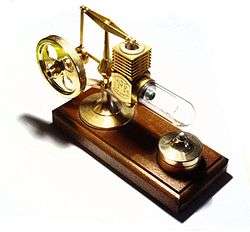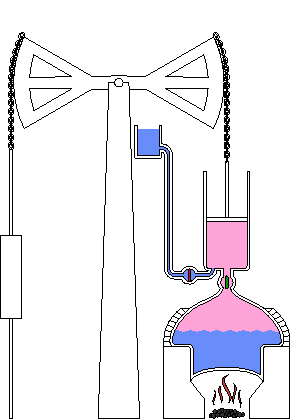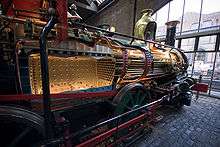External combustion engine



An external combustion engine (EC engine) is a heat engine where a working fluid, contained internally, is heated by combustion in an external source, through the engine wall or a heat exchanger. The fluid then, by expanding and acting on the mechanism of the engine, produces motion and usable work.[1] The fluid is then cooled, compressed and reused (closed cycle), or (less commonly) dumped, and cool fluid pulled in (open cycle air engine).
Combustion
"Combustion" refers to burning fuel with an oxidizer, to supply the heat. Engines of similar (or even identical) configuration and operation may use a supply of heat from other sources such as nuclear, solar, geothermal or exothermic reactions not involving combustion; they are not then strictly classed as external combustion engines, but as external thermal engines.
Working fluid
The working fluid can be of any composition and the system may be single phase (liquid only or gas only) or dual phase (liquid/gas).
Single phase
Gas is used in a Stirling engine. Single-phase liquid may sometimes be used.
Dual phase
Steam, as in a steam engine, is another option. In the case of the steam engine, or the Organic Rankine cycle the fluid changes phases between liquid and gas.
See also
- Organic Rankine cycle
- Steam engines
- Stirling engines
- Trochilic engine
- Internal combustion engine (ICE)
- Nuclear power
- Solar thermal rocket (an externally heated rocket)
- Naptha engine, a variant of the steam engine, using a petroleum liquid as both fuel and working fluid.
References
| ||||||||||||||||||||||||||||